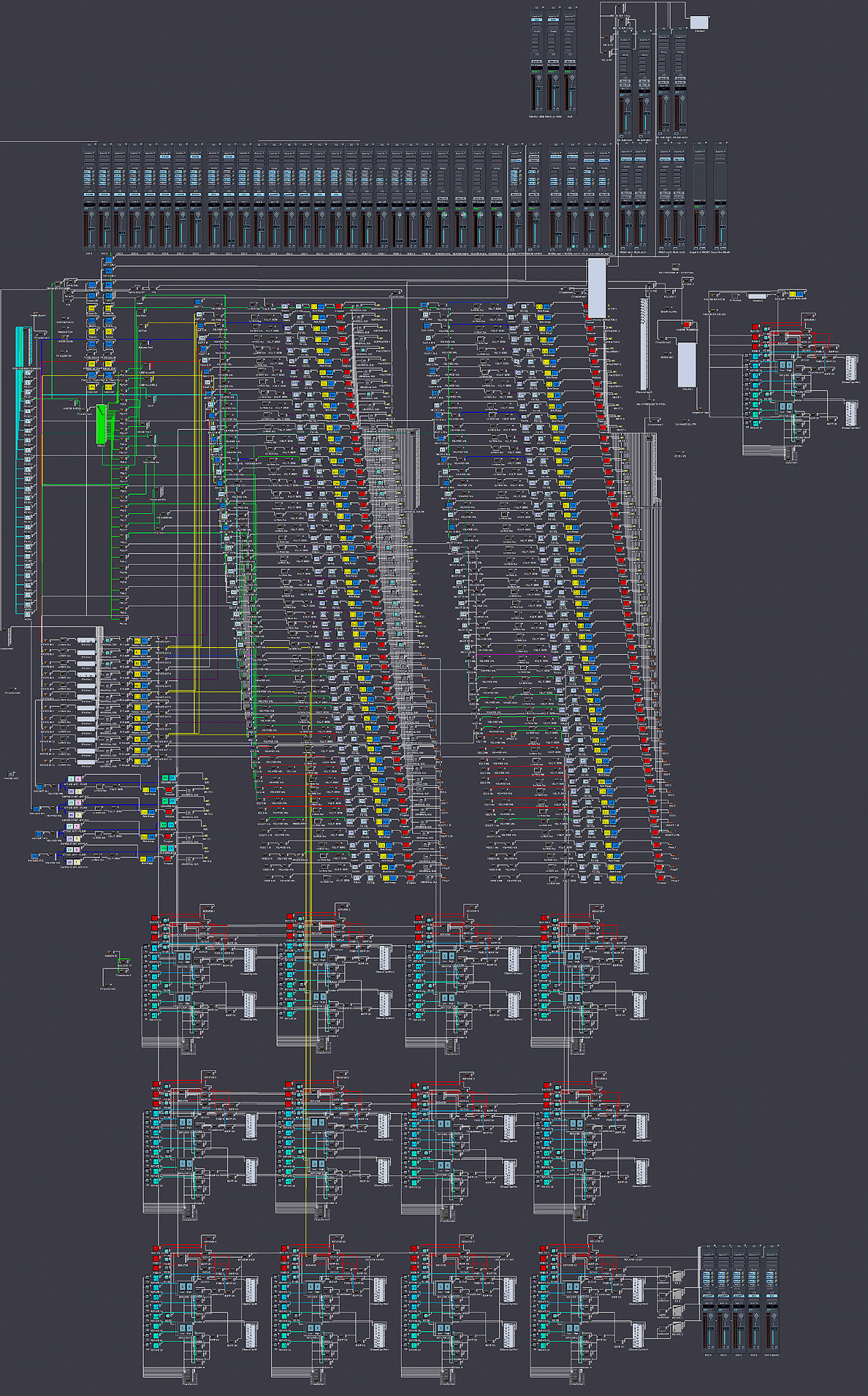| This is a 22-screen shrunken compilation image of Michael Brecker's EWI (Akai's Electronic Wind Instrument) setup; 2 5-foot racks of modules replaced by this large Logic environment (and accompanying 40-module Reason setup). If you haven't seen Mike do the solo EWI performance, it's quite a mind-blower; here stands this guy playing what looks like a matchbox plugged into a powerbook, but what's coming out is a loud, cinematic symphony of every conceivable sort of noise, several hundred sounds triggered, layered, looped, built into a big sonic feast with Mike blowing over it all. The EWI itself gives us really just 4 things with which to work: 8 octaves worth of notes, channel pressure, patch change numbers, and a sustain feature that lets Mike build chords. The idea with this environment is that Mike can access every possible sound or effect source, creating extremely complex splits/layers/processes, each element of which has flexible pressure scale/curve adaptability, volume, note range, sustain on/off (including a global sustain function that lets enabled sounds ring, toggled by the highest 2 notes on the instrument), routing, etc. with almost everything controlled by note on/offs, which are crunched by transformers into every conceivable controller or Meta event. The 12 modules at the bottom are "rotators"; souped-up versions of the Oberheim Matrix-12's "rotate" mode; in the '90s Mike and Rob Kilgore came up with a way to make surprisingly beautiful algorithmic harmony using this tool on the Oberheim; having 12 addressable ones gives Mike the flexibility to use different ones for different parts of the performance. This iteration of the EWI environment is now running in Quad, which was quite a bitch to implement; Since Logic 6.43 could only play one instrument at once, we built the whole thing using Reason modules as sound sources controlled by this environment, but Reason only works in stereo (though I found a way to make fairly graceful quad outputs from it). Also, Mike employs a "looper" in performance, loading up 5 or 10 seconds worth of music, then hitting a note (all parameters of the loop performance are handled by the bottom octave of the EWI's notes) and creating another loop (the "bridge?"), then switching between the two as he blows. The only workable looper we found as a plug-in was the Augustus looper, but it, too, is only stereo. This meant that doing quad on the audio objects wasn't as simple as just putting up the quad panner; again, we found a way to make it work that's not too hard to look at. This environment is probably going to get still bigger as more occurs to us. If you ever get a chance to see Mike play this thing, go!  |